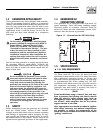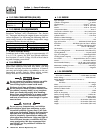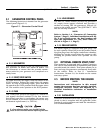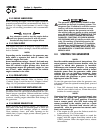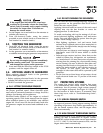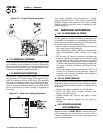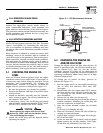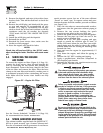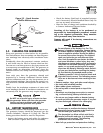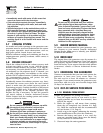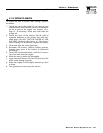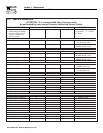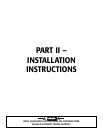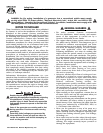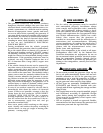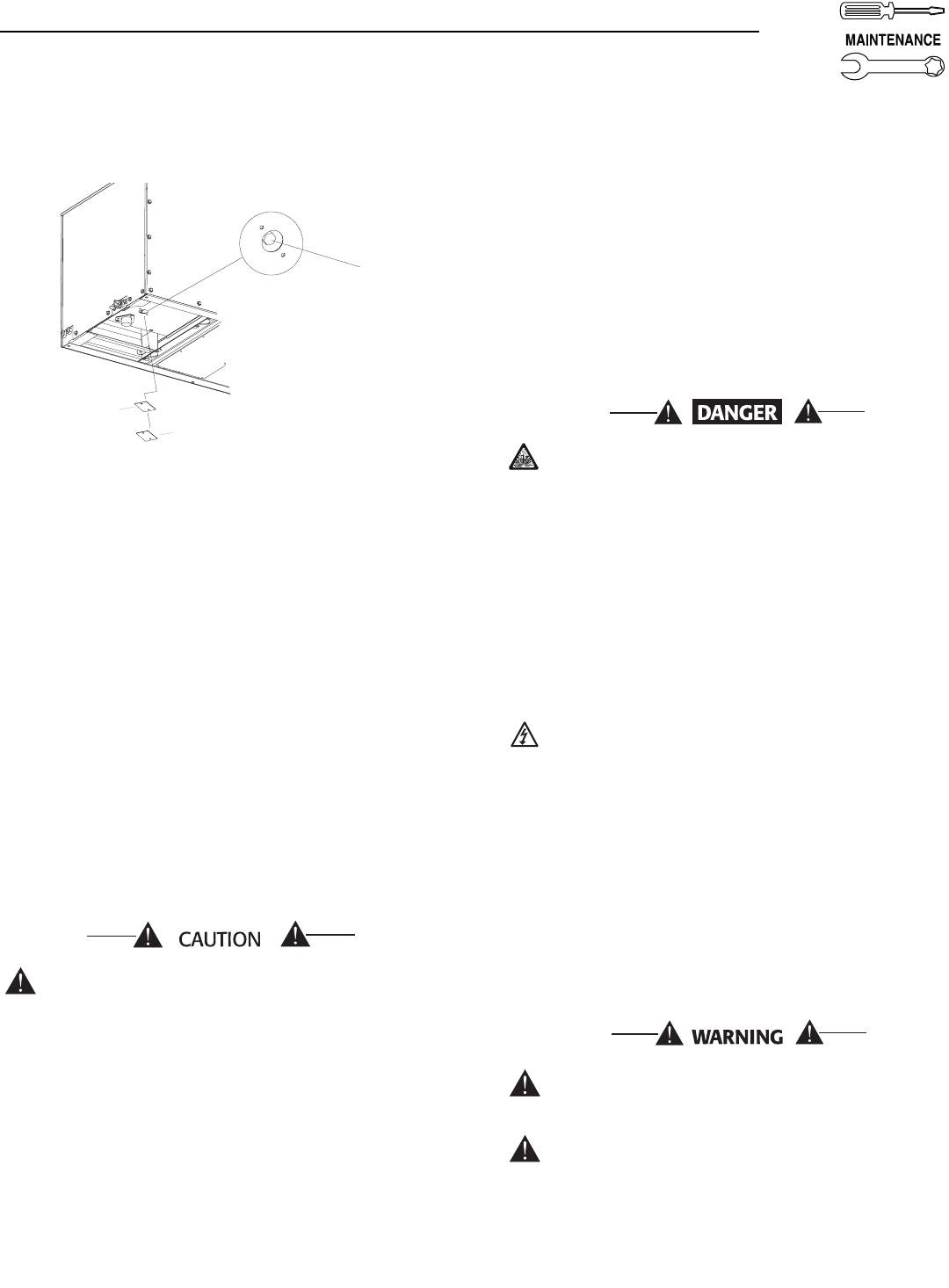
Section 3 – Maintenance
QUIETPACT™ 65D Recreational Vehicle Generator
Figure 3.3 – Spark Arrestor
Muffler Maintenance
3.5 CLEANING THE GENERATOR
Keep your generator as clean and as dry as possible.
Dirt and moisture that accumulate on internal gener-
ator windings have adversely affect insulation resis-
tance.
Periodically, clean the generator’s exterior surfaces.
A soft brush may be used to loosen caked-on dirt.
You can use a vacuum system or dry, low-pressure air
to remove any accumulations of dirt. The generator is
housed inside an all-weather enclosure; clean the
enclosure with a soft, damp cloth or with sponge and
water.
Once each year, have the generator cleaned and
inspected by a Generac Authorized Service Dealer.
Service technicians will use dry, low-pressure air to
clean internal windings. Parts inside the control con-
sole should be cleaned and inspected at this time, as
well.
Finally, have the insulation resistance of stator and
rotor windings checked. If insulation resistances are
excessively low, the generator may require drying.
Do NOT use a forceful spray of water to clean
the generator. Water will enter the generator
interior and cause problems, and may also
contaminate the generator fuel system.
3.6 BATTERY MAINTENANCE
All lead-acid batteries will discharge when not in use.
The generator battery should be inspected per the
“Service Schedule,” Section 3.13 (Page 16). The fol-
lowing procedure should be used for inspection:
• Inspect the battery posts and cables for tightness
and corrosion. Tighten and clean as necessary.
• Check the battery fluid level of unsealed batteries
and, if necessary, fill with Distilled Water Only. Do
not use tap water in batteries.
• Have the state of charge and condition checked by
a Generac Authorized Service Dealer.
NOTE:
Servicing of the battery is to be performed or
supervised by knowledgeable personnel, accord-
ing to the required precautions. Keep unautho-
rized personnel away from batteries.
Damage will result if the battery connections are
made in reverse.
Do not dispose of the battery in a fire. The
battery is capable of exploding. Storage batter-
ies release explosive hydrogen gas. This gas can
form an explosive mixture around the battery
for several hours after charging. The slightest
spark can ignite the gas and cause an explo-
sion. Such an explosion can shatter the battery
and cause blindness or other injury. Any area
that houses a storage battery must be properly
ventilated. Do not allow smoking, open flame,
sparks, or any spark-producing tool or equip-
ment near the battery. Discharge static electrici-
ty from your body before touching the battery
by first touching a grounded metal surface.
A battery presents a risk of electrical shock and
high short-circuit current. The following precau-
tions are to be observed when working on bat-
teries:
• Remove watches, rings, and other metal objects;
• Use tools with insulated handles;
• Wear rubber gloves and boots;
• Do not lay tools or metal parts on top of the
battery;
• Disconnect any charging source prior to connect-
ing, or disconnecting, battery terminals; and
• Do not use any jumper cables or booster battery
to crank and start the generator engine. If any bat-
tery has discharged, remove it for recharging.
Do not open or mutilate the battery. Released
electrolyte has been known to be harmful to
the skin and eyes, and to be toxic.
The electrolyte is a dilute sulfuric acid that is
harmful to the skin and eyes. It is electrically
conductive and corrosive. The following
procedures are to be observed:
• Wear full eye protection and protective clothing;
3/8" NPT HEX
PIPE CAP
GASKET
ACCESS PLATE
Generac
®
Power Systems, Inc. 13



